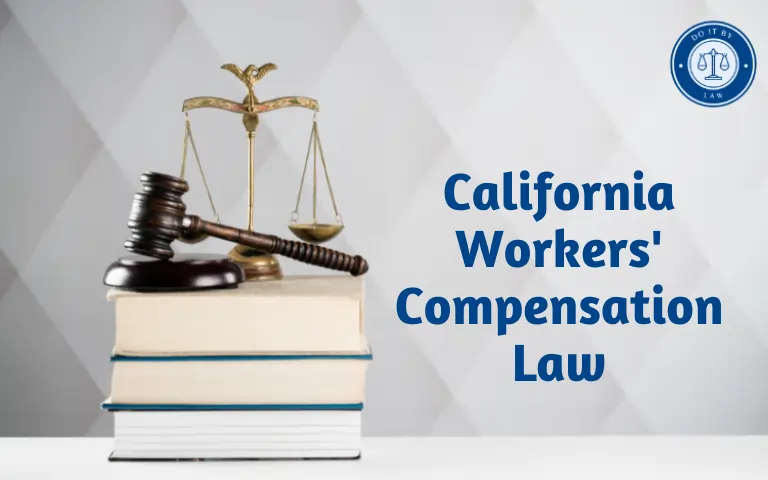California Workers’ Compensation Law: What You Need to Know
California State first enacted a Workers’ Compensation system in 1913. The law defines a no-fault insurance program to provide medical, disability, and other benefits to employees injured on the job. This article outlines key details of California Workers’ Compensation Law Comp regulations including eligibility, required coverage, dispute resolution processes, and recent legislative reforms.
At a high level, California Workers’ Comp functions as a mutual agreement between employers and employees to cover workplace accident costs separately from the tort system. Injured workers receive swift assistance regardless of fault. In return, they forfeit the right to sue companies for negligence.
Who California Workers’ Compensation Law Applies To
California’s Workers’ Comp system covers most public and private employees with limited exceptions. Standard rules include:
Eligible Employees
- Full-time and part-time
- Documented and undocumented
- Union and non-union
Exempt Employers
- Federal government
- Some nonprofit/voluntary activities
- Rehab organization patient workers
Self-employed independent contractors and volunteers are also generally excluded, though rules continue to evolve with employment classification disputes around gig economy jobs.
Domestic partners may have benefits eligibility similar to spouses depending on company policies.
Key Provisions of California Workers’ Compensation Law
California Workers’ Compensation law provides four major forms of support to injured employees:
Medical Care
Covers all reasonable and required treatment related to the injury, potentially including:
- Diagnostic tests
- Specialist visits
- Surgeries
- Physical therapy
- Prescriptions
No copays, deductibles, or monthly limits are permitted. Support lasts as long as treatment is medically necessary.
Temporary Disability Payments
Compensates for lost wages from being unable to work while recovering. For the first 3 days post-injury there is a waiting period with exceptions. Afterward, statutory limits pay 2/3 of gross weekly wages up to $1,390.43 maximum currently.
Payments continue until the doctor clears return to normal job duties or reaches a Permanent Disability assessment.
Permanent Disability Payments
Pays qualified injured employees who suffer chronic long-term or lifetime health limitations reducing their earnings capacity. The amount depends on doctor-assessed disability rating and formulas factoring income and occupation.
Lump sums from low five figures into six figures are common, with lifetime support possible in extreme cases.
Supplemental Job Displacement
Provides a non-transferable voucher to fund retraining or skill development for qualifying workers who still have permanent work restrictions after exhausting other benefits.
The current voucher amount is up to $8,000 for injuries causing over 30% loss of pre-injury earnings capacity.
Penalties for Violating California Workers’ Compensation Law
Failing to carry legally required Workers’ Compensation insurance brings substantial penalties against California employers including:
Fines
Minimum $1,500 penalty, up to $10,000 per employee, for each violation. Multiply by number of employees and days out of compliance.
Stop Work Orders
Businesses can be forcibly shut down until providing proof of active coverage.
Lawsuits
Employees retain the right to sue non-compliant employers for tort liability in injury cases. Damages easily exceed the Workers’ Comp scale.
Fraud
Severely penalizes false claim statements by employers, employees, and health providers. Potential perjury prosecution.
Complying with all the regulatory and adjudication processes for this no-fault system remains complex for employers. Mistakes can trigger penalties around the provision of benefits, notifications, utilization review details, and required posters and paperwork.
Recent Changes and Proposed Reforms
Updates to California’s Workers’ Compensation system come through legislation, administrative updates, and court rulings. Major changes include:
January 2023
Calculation increase for 2023 maximum weekly Temporary Disability rate, now $1,390.43 per week.
January 2022
- Repeal of apportionment allowing employers to limit liability for disabilities considered partially pre-existing conditions. Now covers full disability regardless of cause.
- Formulary guidelines and utilization controls introduced for opioid prescriptions.
January 2021
- Reimbursement increases to cover entire prescription costs rather than tiny dispensing fees.
- Claims filing deadline extension from 1 year to 2 years post-injury.
January 2020
Firefighter ‘cancer presumption’ added recognizing occupational diseases. Streamlines approval for cancer-related Workers’ Comp when employment increases risk factors.
As evolving employer-employee relationships raise new challenges, further updates focus on gig economy gaps, mental health coverage, COVID-19 claims, and anti-discrimination protections in the years ahead.
Controversies, Debates, and Challenges
Ongoing disputes shape California’s Workers’ Comp system reforms such as:
Benefit Levels
Labor interests argue payouts lag average costs of support in injury cases and lack parity with higher public employee benefits. Businesses counter that premiums are already unsustainably high in California hampering operations.
Medical Control Problems
Insurers lack choice and oversight in care decisions that permit excessive treatments, tests, complications, and addictive medications according to cost containment critics. Patient advocates counter that utilization review causes treatment delays rather than safety.
Prescription Guidelines
Formulary controls introduced to cut opioid overprescribing and abuse are judged as clinical best practices by insurers, but inhumane restrictions on vital pain relief by some physicians and patients.
Coverage Gaps
Growing debates about whether PTSD, infectious diseases, and other complex injury claims require better compensation through the no-fault system vs civil litigation reserved for fault disputes. Jurisdictional battles loom between regulators, courts, and lawmakers.
Benefit Equity
Increasing employee misclassification and claim suppression tactics by employers accused of interfering in the good faith function of the fault safety net. Counterpoint that overclaiming and outright fraud by attorneys and claimants also soar unchecked.
Conclusion & Key Takeaways
California operates one of the most expansive Workers’ Compensation systems in America, yet delivering benefits efficiently and fairly across all stakeholders remains an evolving challenge. Key points for employees and employers include:
- Nearly all employees are eligible for no-fault workplace injury support
- Employers must carry approved insurance with few exceptions
- Support includes full medical care plus over 66% income replacement
- Permanent payouts compensate for long-term impairment
- Non-compliance brings major fines; Claim disputes have specialized venue
Ensuring California Work Comp functions for the modern employment landscape will continue generating lively legislative proposals, regulatory reforms, and precedent-setting legal battles between system participants. But the no-fault foundation of supporting injured workers regardless of circumstances remains intact.







